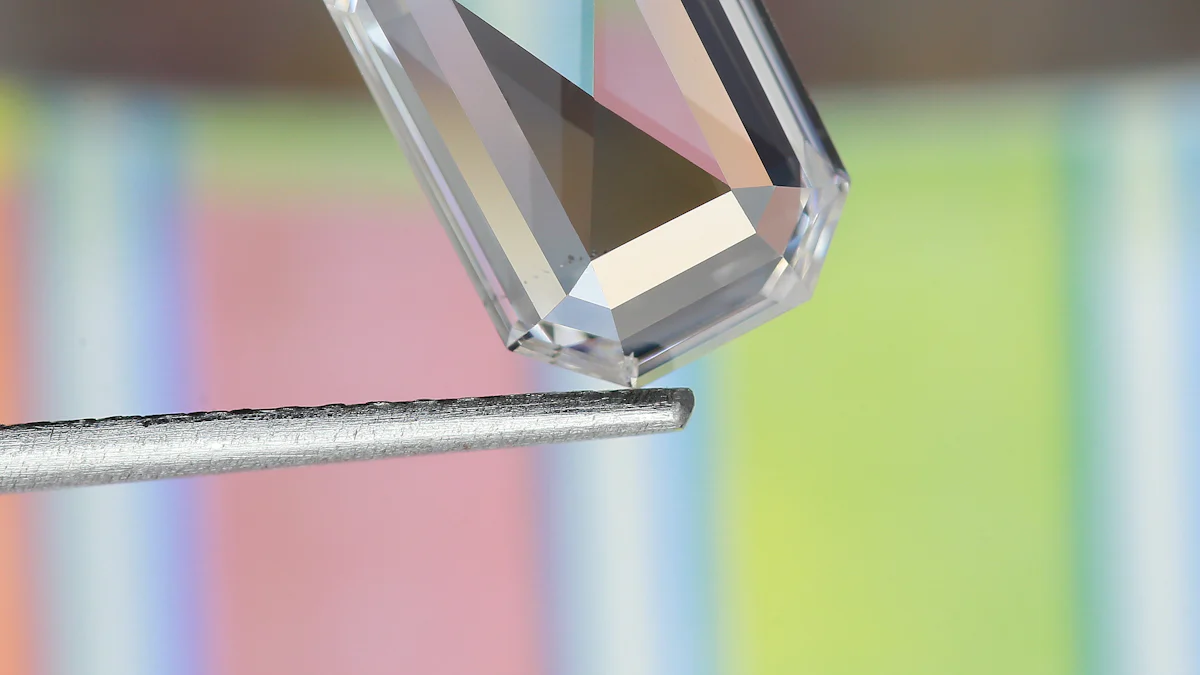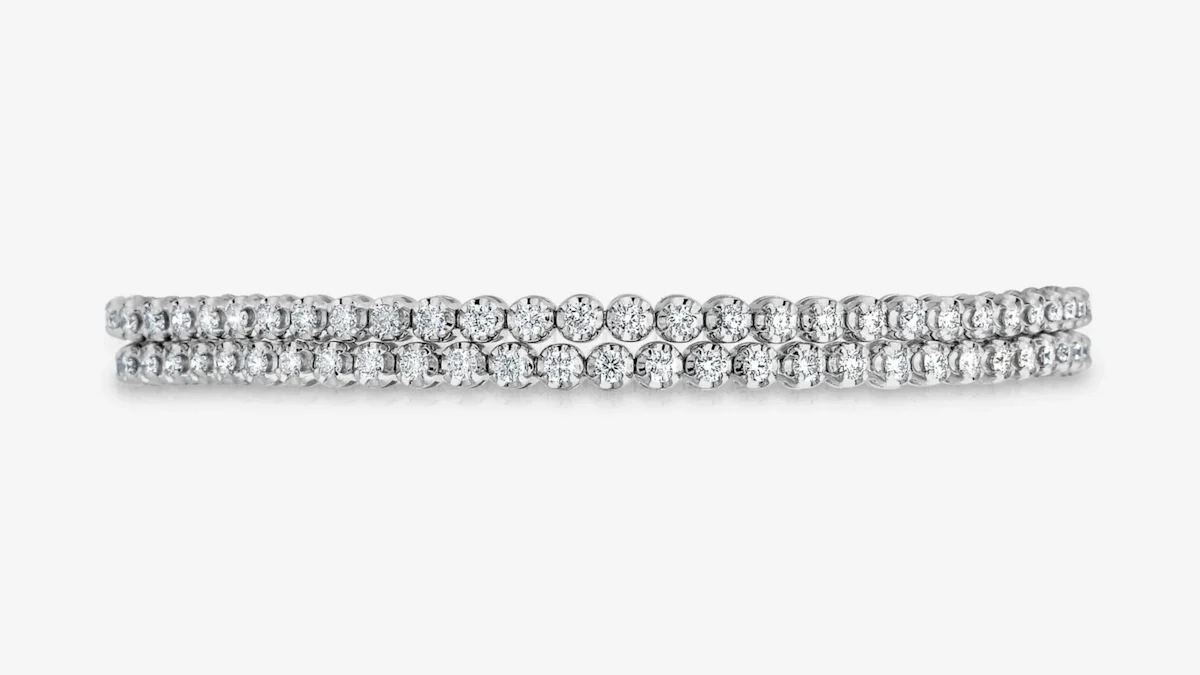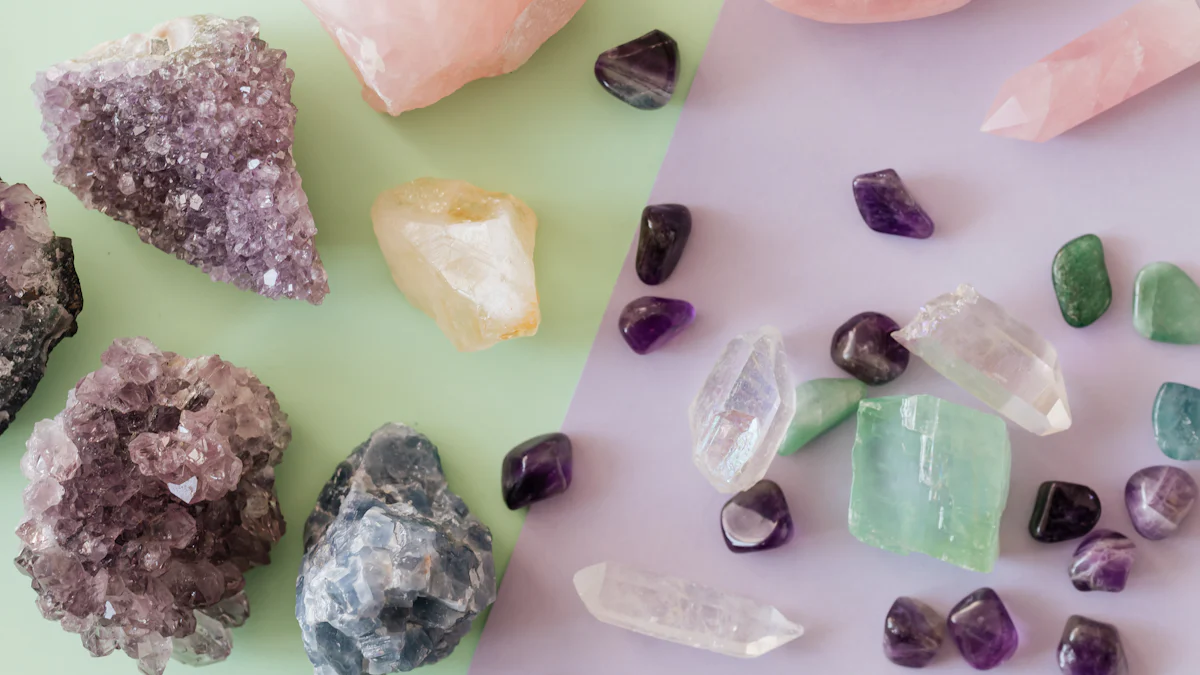Diamond vs Diamond: Quality or Quantity?

When it comes to choosing diamonds, the debate of "diamond vs diamond" often boils down to quality versus quantity. You face a crucial decision that hinges on your personal preferences, budget, and how you plan to use the jewelry. Quality is defined by the four Cs: cut, color, clarity, and carat weight. Quantity, on the other hand, refers to the number of diamonds in a piece. Each choice offers unique benefits, but understanding your priorities will guide you to a satisfying purchase. Choose wisely, and let your values shine through your selection.
Key Takeaways
- Understand the Four Cs (cut, color, clarity, carat) to evaluate diamond quality effectively.
- Prioritize cut for maximum sparkle; a well-cut diamond enhances brilliance more than size.
- Consider the benefits of multiple diamonds for versatility and a luxurious appearance without breaking the bank.
- Balance your personal style and budget when choosing between a single high-quality diamond and multiple smaller stones.
- Consult with experts to gain insights and make informed decisions about your diamond purchase.
- Evaluate the purpose of your jewelry to guide your choice between quality and quantity.
- Remember, the best diamond choice reflects your values and personal preferences, ensuring lasting satisfaction.
Understanding Diamond Quality

When you delve into the world of diamonds, understanding quality becomes essential. The concept of "diamond vs diamond" often revolves around the Four Cs: cut, color, clarity, and carat weight. These factors collectively determine a diamond's beauty and value.
The Four Cs of Diamond Quality
Cut
The cut of a diamond significantly influences its sparkle. A well-cut diamond reflects light beautifully, creating a dazzling effect. You should prioritize cut when considering quality, as it directly impacts the diamond's brilliance.
Color
Color refers to the presence of any hue in a diamond. The less color a diamond has, the higher its quality. Diamonds range from colorless to light yellow or brown. Opt for a diamond with minimal color to ensure a classic and elegant appearance.
Clarity
Clarity measures the presence of imperfections within a diamond. Fewer inclusions and blemishes mean a higher clarity grade. You should aim for a diamond with high clarity to enhance its visual appeal and value.
Carat
Carat weight indicates the size of a diamond. While larger diamonds may seem appealing, remember that quality often trumps size. A smaller diamond with superior cut, color, and clarity can be more valuable than a larger one with lower grades.
How Quality Impacts Value and Appearance
Longevity and Durability
High-quality diamonds offer exceptional durability. They withstand daily wear and maintain their brilliance over time. Investing in quality ensures your diamond remains a cherished piece for years to come.
Aesthetic Appeal
A diamond's aesthetic appeal largely depends on its quality. Superior cut, color, and clarity create a captivating sparkle that draws attention. When choosing between diamond vs diamond, prioritize quality to achieve a stunning and timeless look.
Exploring Diamond Quantity

When considering diamond jewelry, you might wonder about the benefits of choosing multiple diamonds over a single, high-quality stone. Opting for quantity can offer unique advantages that enhance your jewelry's overall appeal.
Benefits of Multiple Diamonds
Versatility in Design
Multiple diamonds provide a canvas for creativity. You can explore various designs, from intricate patterns to bold statements. This versatility allows you to tailor your jewelry to match your personal style. For instance, diamond cluster rings, composed of smaller stones, create a larger visual impact. They offer a dramatic effect that a single diamond might not achieve. By choosing multiple diamonds, you can enjoy a piece that stands out and complements any outfit.
Perceived Value
A piece adorned with multiple diamonds often appears more luxurious. The abundance of stones can give the impression of higher value, even if each diamond is smaller. This perception can make your jewelry feel more extravagant without exceeding your budget. When comparing diamond vs diamond, consider how multiple stones can elevate the perceived worth of your piece.
Considerations for Total Carat Weight
Budget Implications
Choosing multiple diamonds can be a cost-effective strategy. Smaller diamonds generally cost less than a single large one. This approach allows you to maximize your budget while still acquiring a stunning piece. However, it's essential to balance the number of diamonds with their quality to ensure you get the best value for your money.
Style Preferences
Your style preferences play a crucial role in deciding between multiple diamonds and a single stone. If you prefer a bold, eye-catching look, multiple diamonds might be the way to go. They add dimension and drama to your jewelry, making it a statement piece. On the other hand, if you lean towards classic elegance, a single high-quality diamond might better suit your taste.
In the diamond vs diamond debate, understanding the benefits of quantity can guide you to a choice that aligns with your style and budget. Whether you opt for multiple diamonds or a single stone, let your preferences lead the way to a decision you'll cherish.
Balancing Quality and Quantity
In the diamond vs diamond debate, finding the right balance between quality and quantity can lead to a satisfying purchase. You can achieve this by considering practical tips and making informed decisions.
Practical Tips for Budget-Friendly Choices
Prioritizing Personal Preferences
When selecting diamonds, your personal preferences should guide your decision. Consider what matters most to you. Do you value the brilliance of a well-cut diamond, or do you prefer the visual impact of multiple stones? By prioritizing the four Cs—cut, color, clarity, and carat weight—you can tailor your choice to fit your unique style. For instance, opting for a slightly lower-carat weight diamond with higher grades in cut, color, and clarity can offer a stunning piece without exceeding your budget.
Evaluating the Occasion and Purpose
The occasion and purpose of your jewelry play a crucial role in your decision-making process. Are you purchasing a diamond for everyday wear or a special event? For daily use, durability and practicality might take precedence, suggesting a focus on quality. Conversely, for a special occasion, you might lean towards a more extravagant design with multiple diamonds. Understanding the context helps you make a choice that aligns with your needs and enhances the jewelry's significance.
Making Informed Decisions
Consulting with Experts
Consulting with experts can provide valuable insights into the diamond vs diamond dilemma. Jewelers and gemologists possess the knowledge to guide you through the intricacies of diamond selection. They can help you understand the nuances of the four Cs and how they impact the overall value and appearance of your jewelry. By seeking expert advice, you ensure that your decision is well-informed and tailored to your preferences.
Comparing Options
Comparing different options allows you to weigh the benefits of quality versus quantity. Examine various pieces, considering how each aligns with your priorities. Look at the sparkle of a single high-quality diamond versus the allure of multiple stones. This comparison helps you visualize the impact of your choice and ensures that you select a piece that resonates with your style and budget.
By balancing quality and quantity, you can make a decision that reflects your values and enhances your jewelry collection. Whether you choose a single, exquisite diamond or a piece adorned with multiple stones, let your preferences and informed choices guide you to a purchase you'll cherish.
Choosing between diamond quality and quantity ultimately rests on your personal preferences, lifestyle, and budget. Your decision should reflect what you value most in a diamond. Do you prioritize the brilliance of a single, high-quality stone, or do you prefer the visual impact of multiple diamonds? Educate yourself about diamonds and seek expert advice to make informed choices. Remember, there is no single 'best' diamond. The ideal diamond aligns with your aesthetic desires and financial constraints. Let your values guide you to a decision that you will cherish for years to come.
FAQ
What are the 4Cs of a diamond and how do they impact its quality?
The 4Cs of a diamond—cut, color, clarity, and carat—are essential in determining its quality. The cut affects how brilliantly the diamond shines. Color measures the whiteness, with less color indicating higher quality. Clarity checks for imperfections, while carat indicates the size. Understanding these factors helps you choose a diamond that meets your standards for beauty and value.
What is the ongoing debate between quality and quantity when choosing a diamond for jewelry?
The debate centers on whether to prioritize quality, as defined by the 4Cs, or quantity, which refers to the number of diamonds in a piece. Quality impacts the diamond's appearance and value, while quantity can enhance the overall visual impact of the jewelry. Your choice depends on personal preferences and the intended use of the jewelry.
What are the factors that affect the quality and price of a diamond?
Several factors influence a diamond's quality and price. The 4Cs—carat, color, clarity, and cut—are primary considerations. Additional factors include cut quality, fluorescence, grading lab, polish, symmetry, and whether the diamond is conflict-free. These elements collectively determine the diamond's market value and appeal.
What does the clarity of a diamond refer to?
Clarity refers to the presence of inclusions and blemishes within a diamond. It is a key aspect of diamond quality, impacting both the beauty and value of the stone. A diamond with fewer imperfections is considered more desirable and valuable.
Why is clarity an important factor when purchasing a diamond?
Clarity is crucial because it affects the diamond's visual appeal and worth. Inclusions and blemishes can detract from the diamond's beauty. By prioritizing clarity, you ensure that your diamond maintains its aesthetic charm and retains its value over time.
Why is understanding diamond clarity important?
Understanding diamond clarity helps you avoid purchasing a diamond that doesn't meet your expectations. Inclusions and features within the gemstone can significantly impact its appearance and value. Being informed about clarity ensures you make a wise investment, especially for significant purchases like engagement rings.
What are the important factors to consider when buying a diamond?
When buying a diamond, consider the cut, clarity, carat weight, color, certification, and shape. These factors collectively determine the diamond's quality and value. By evaluating each aspect, you can select a diamond that aligns with your preferences and budget.
Why is it recommended to do research before buying a diamond?
Researching before purchasing a diamond is vital. It helps you understand the 4Cs, compare different grades, and make an informed decision. Given the significant investment involved, being well-informed ensures you choose a diamond that meets your expectations and offers lasting satisfaction.
Where can one learn more about diamond clarity?
To learn more about diamond clarity, refer to resources that provide detailed information on clarity charts. These resources offer insights into how clarity grades are determined and how they affect a diamond's appearance and value.
See Also
Comparing Prices of Various Diamond Necklace Designs
Price Comparison of Diamond All-Around Rings
A Comprehensive Review of Kay Jewelers Diamond Rings
Comparative Analysis of Tungsten and Traditional Diamond Rings

